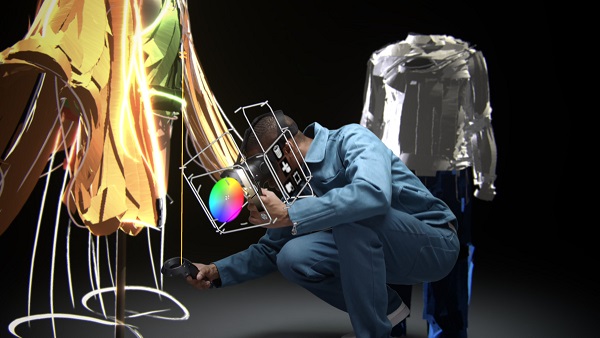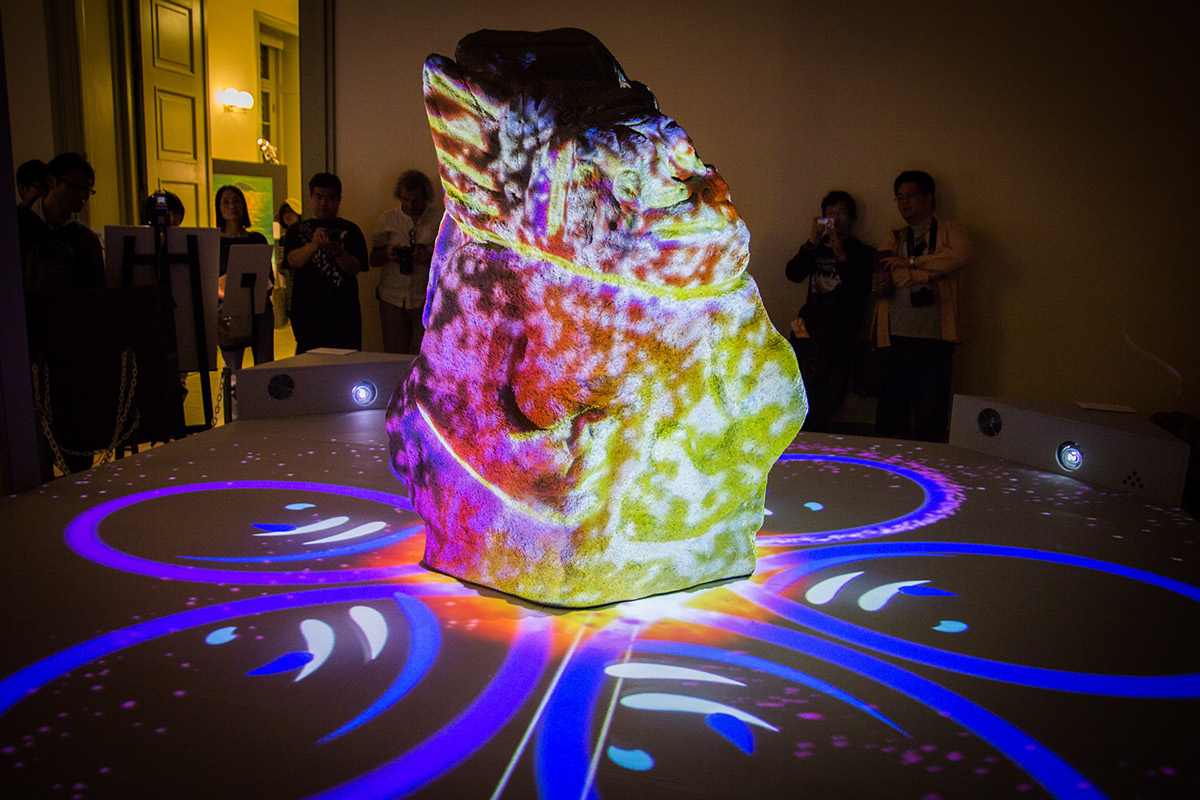The first examples of digital art were created over 100 years ago – these were images of electronic waves taken by digital art pioneer Ban F. Laposky. If in the first decades of its existence, digital art was rather monotonous, rare and simple, today this industry has developed so much that new approaches to creating art using digital tools appear every month. In this article, we have collected the most interesting types of digital art that overturn the usual ideas about interacting with artworks.
1. VR Art
VR Art involves the creation of digital works in virtual reality using special programs. To create art, the VR artist puts on a headset and gloves and enters a 3D computer-generated environment. This whole environment acts as a kind of canvas and the artist can move around and draw right in the air. By the way, virtual reality is not only a way to create art, but also a way to view it – today virtual exhibitions, projects and galleries are becoming more and more popular.
Source: https://www.royalacademy.org.uk/article/what-virtual-reality-means-for-art
2. Generative Art / Algorithmic Art
Generative or algorithmic art is completely or partially created with the help of mathematics, more precisely, an autonomous system. This may seem unexpected, but algorithmic art arose quite a long time ago, in the 1960s, and the first examples were created using a plotter – a printer that receives commands from a computer program and generates line drawings based on them. Generative art is created in tandem between an artist and an algorithm, where the former is responsible for creating the software and the latter is responsible for generating the final image.
3. Projection mapping
The essence of projection mapping is the projection of moving or static digital art onto non-flat surfaces. For projection mapping, artists often use the environment, people, buildings, or other common objects that were not created as interactive displays. Projection mapping can be both an independent digital art type and part of more complex projects, such as theatrical productions, happenings, performances, etc.
360° Projection Mapping at Tokyo National Museum
Source: https://www.behance.net/gallery/18274331/360-Projection-Mapping-at-Tokyo-National-Museum
4. Net Art
Net art is art that can exist solely on the Internet; net artists use data from Internet resources and websites as the main source of creativity, and the online space as the only possible platform to showcase their art. The boundaries of net art, like global art, are difficult to define, but for several decades its main characteristics have been dependence on the Internet and exists within a browser.
5. AR Art
AR art, that is, art that exists in augmented reality, allows you to move digital artworks into a real physical environment, for example, on the wall of your living room. With this technology, which has become especially popular during the pandemic, you can view both digital and digitized art in real size, wherever you are.
AR artwork by Pipilotti Rist
Source: https://www.dezeen.com/2019/07/31/apple-augmented-reality-art-tours-technology/




